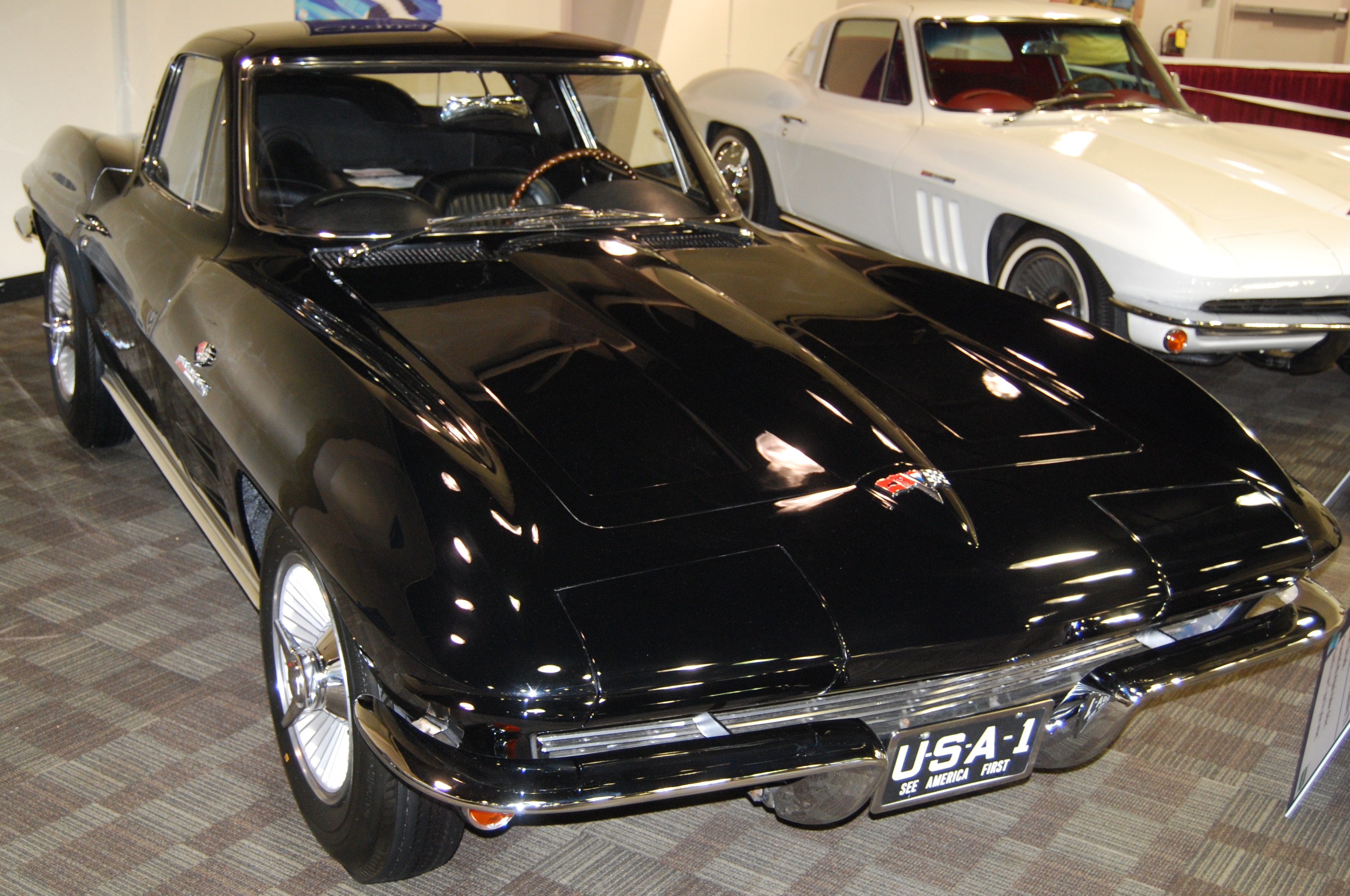
There are many similarities between 1963 and 1964 Corvettes, but while overall styling was unchanged, it was cleaned up a bit for 1964. On the aerodynamically styled fast back coupe, the previous season’s distinctive divided rear window was replaced by a solid piece of glass. The Corvette’s fake hood vents were eliminated and the rear quarter roof vents were restyled. These vents were now partly functional, allowing stale air to be extracted from inside the car.
A new walnut-grained wheel was one change apparent in the ’64 Corvette interior. Tan leather seating had been introduced in 1963, but this year, leather trim was available in all colors. A three-speed fan was available in the coupe to aid in ventilation. Also new outside were slotted standard wheel discs.
A quartet of 327-cid V-8s was offered again with the base 250-hp and the one-step-up 300-hp versions carried over. The solid-lifter four-barrel V-8 got a boost to 365-hp and the fuel-injection engine carried an even higher new 375-hp rating. This top engine option had the optional Rochester fuel injected system.
Zora Arkus-Duntov was behind a new CERV II (Chevrolet Engineering Research Vehicle II) experimental car that appeared this year. Designers Larry Shinoda and Tony Lapine worked on this prototype, which started off as a sports-racing-car concept. The engine was located behind the driver, with one torque converter in front and one at the rear. This car along, with the earlier CERV I made in 1959 went into the Briggs Cunningham Auto Museum in Costa Mesa, California to be preserved for many years. Mike Yager now owns the CERV I.
Another 1964 show car was the metallic blue Sting Ray Shark. This was a mildly-modified ’64 Corvette Sting Ray roadster that was probably built for “Bunkie” Knudsen as a street-custom special. It has a white-painted hood blister and special four-outlet side exhaust system.
One of the most exciting special Corvettes was the bright red Styling Concept Car mad for the 1064 New York World’s Fair. This car is also owned by Mike Yager. It was designed by Bill Mitchell’s styling studio and included door panel fitted with sequential flashing reflectors, stainless steel trim, disc brakes (not offered on production models in ’64), polished stainless steel grille inserts in the floor boards, high-back bucket seats with leather upholstery and trim custom dyed to match the iridescent brilliance of the exterior paint, which features a base coat of gold metallic under 15 coats of candy apple red.
Unique Corvette emblems decorate the concept car’s deck lid and glove box door. Special functional side-outlet exhausts are fitted and a fuel-injected 327 hides under the hood. The car uses six Corvette taillights with the lenses reversed. The car also has special mirrors, a special hood cut out and unique race-car like simulated brake-venting outlets in the top of its rear body. This is all complemented by a large one-piece cast nose grille.
General Motor’s decision to honor the Automobile Manufacturers Association’s ban on competition took Chevrolet’s open factory support of Corvette racing out of the picture in 1964, but with encouragement from chief engineer Zora Arkus-Duntov and race-ready cars available right off the showroom floor, private competitors were having a field day driving Corvettes.
Corvette convertibles for 1964 were numbered 40867S100001 to 40867S122229. Corvette Coupes for 1964 were numbered 40837S100001 to 40837S122229. The first symbol 4 indicated the 1964 model year. The second and third symbols 08 meant Corvette. The fourth and fifth symbols were 67 for convertibles or 37 for coupes. The sixth symbol S for the St. Louis, MO assembly plant. The last six symbols were the sequential production number.
The 1964 Corvette convertible retailed for $4,037. A total of 13,925 ragtops were built. The Sting Ray coupe was priced slightly higher at $4,252 and had a production run of 8,304 units. Both cars rode a 98-in wheelbase and had 6.70 x 15 tires. The convertible was 172.2 in long and the coupe was 175.3 in long. A four-speed manual gearbox was installed in 85.7 percent of all Corvettes.
Magazine road tests of 1964 showed that an L84-powered 1964 Corvette could go from 0-to-60 mph in 6.3 seconds and from 0-to-100 mph in 14.7 seconds. It had a top speed of 138 mph. Corvette fans were disappointed when the “Route 66” TV show-featuring two young men adventuring across the country in a Corvette-was cancelled in September 1964.